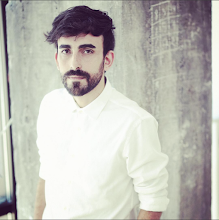‘Cemetery of Architects’ / Studio-X Istanbul
During January 31st - March 28th, Studio-X Istanbul hosts Tayfun Serttaş's exhibition ‘Cemetery of Architects’ and the launch of his book ‘Trilogy of the Deserted City’.
As its second project during January 31st - March 28th, 2014, Studio-X hosts Tayfun Serttaş's exhibition, "Cemetery of Architects" in which the artist examines the relationship between the physical identity of urban space and the individual through an archive. Studio-X, an initiative of Columbia University, is founded in Istanbul in December 2013 with leading support from Borusan Holding. The exhibition, eponymous with an installation by the artist, brings together works that problematize the impact of historic interruptions on Istanbul's cultural map. In "Trilogy of the Deserted City", to be launched in parallel to the opening, the artist shares with the viewers the background of three different projects in which the same historic problem is attempted to be resolved through various media and methodologies. "Cemetery of Architects" exhibition is supported by a six-week public programming under the heading "half-century before, half-century after".
Cemetery of Architects
Architectural inscriptions, which could be read on the corners of buildings in Istanbul in the last quarter of the 19th century, evidence the parallel development of the identity of the individual to modernism. Instead of the anonymous architecture of the period before Westernization, these individual architects felt the need the work on their own, playing a role in forming a professional community in a contemporary sense. In contrast to traditional palace architects, supported by the state, the architects of apartment buildings that primarily work within narrow urban lots give direction to civil architecture with their minor activities. As the empire enters a period of Westernization, the cultural rights provided by the rescript of Gülhane and the land cleared by the 1870 Pera fire opened up the path to the building of apartment buildings that was necessitated by the new life style; Istanbul's urban identity is almost re-created with the eclectic style of architectural structures that arose from the synthesis of the European and the Ottoman in the short span of fifty years.
The modernization of the Republic that refused to take as its heritage previous formations of modernity and the moving of the capital city to Ankara stopped the most revered client—the state—from receiving services of projects and design from the industry of architecture, preparing the ground for the architectural interruption experienced in Turkey. The policy of Turkifying the economy that began in the period of the Party of Union and Progress would extend into the early Republic, revising architecture as an area to be conquered. Through the system of thinking that was on the background of the First National Architectural Movement, the re-capturing of this area that was dominated by "others" in the period of the Westernization of the Ottomans was as crucial as the "independence of the country." The ideology that dictates the re-construction of the concept of the architect through national identity consequents in the absolute erasure of civil architectural heritage and the actors from shared memory.
Cemetery of Architects proposes to open up to discussion the buildings of the period, some of which are destroyed within plans of urban transformation, through their architects beyond nostalgia and local exoticism as legitimate and indispensable actors with the tools of contemporary research.
Cemetery of Architects is supported by Silkar Mining and Trading Corporation and Tabanlıoğlu Architects.










































